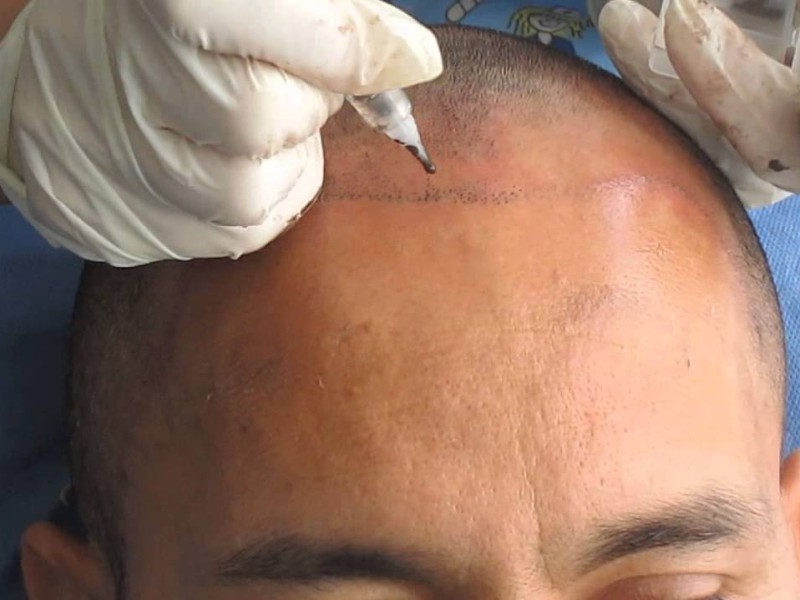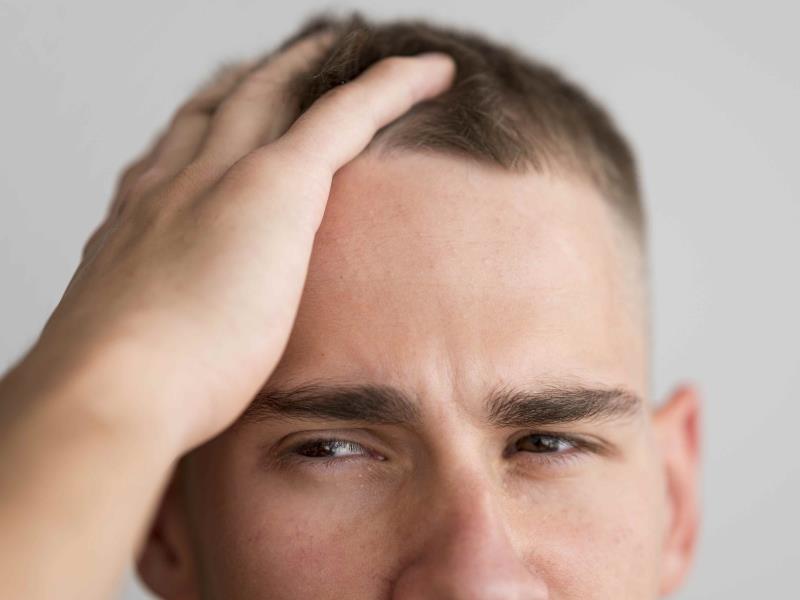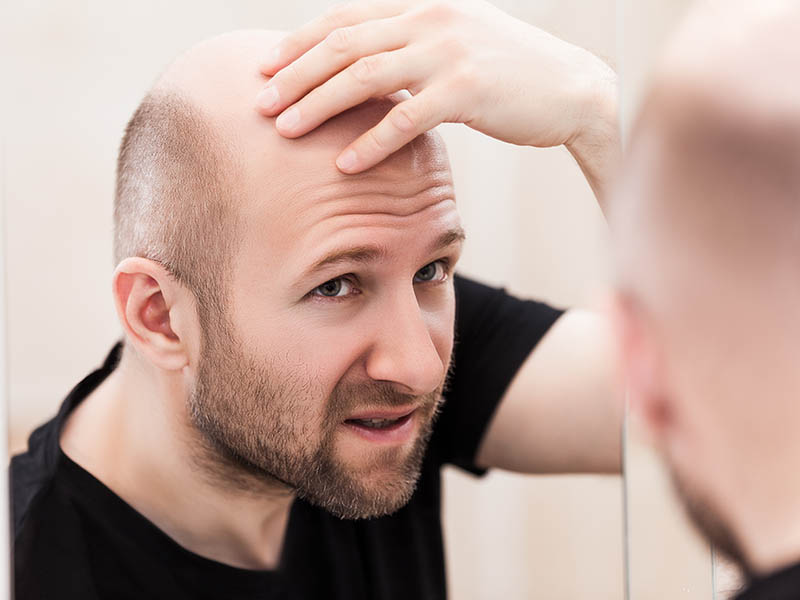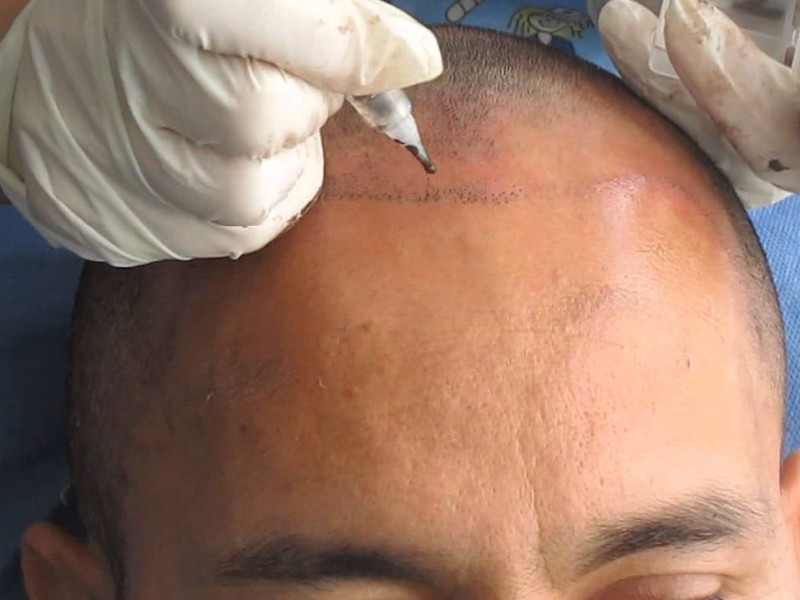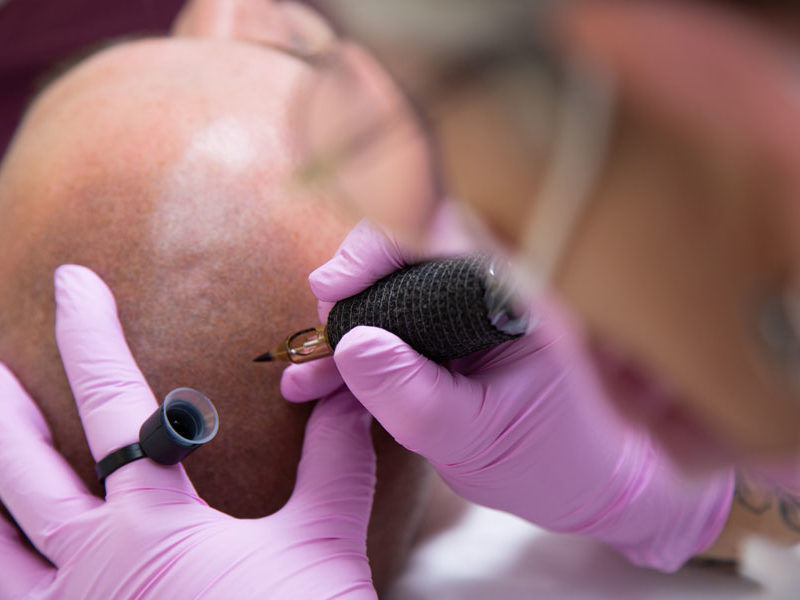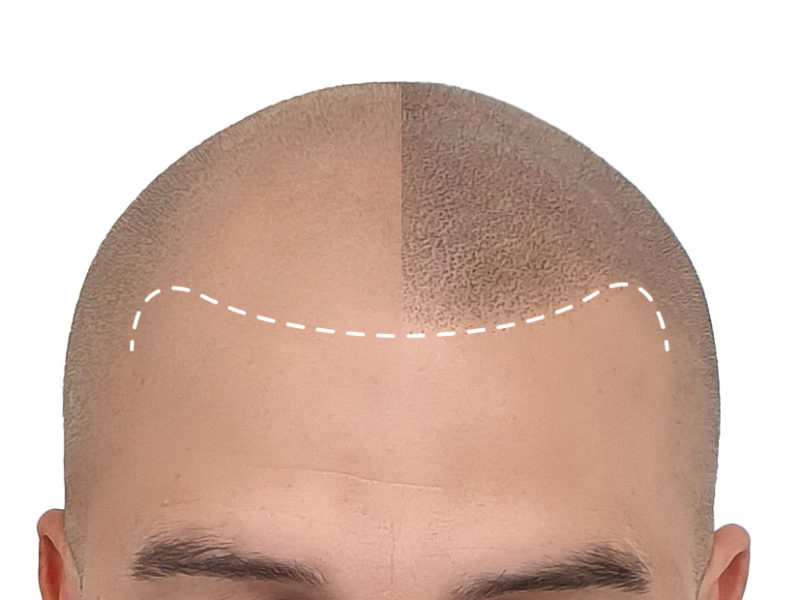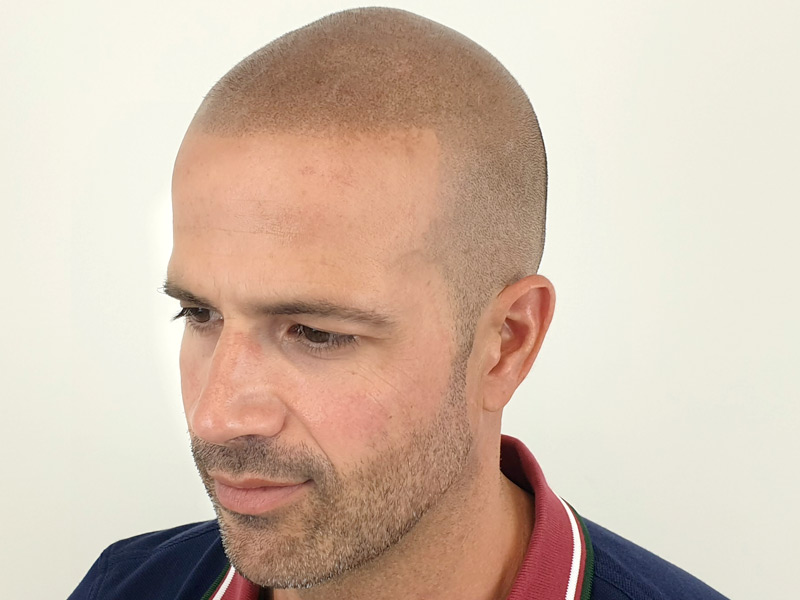
Hair loss in men and women is more frequent than it is believed, for this reason they must have the proper aftercare care. Approximately 95% of men lose their hair due to androgenetic alopecia. The growing phase slows down, skin ages, and hair follicles turn brittle—there are a lot of factors that affect hair loss.
Book your complimentary simulation and check how SMP looks in you before it becomes permanent. Book HERE
What is Scalp Micropigmentation?
The procedure is similar to microblading, which is typically used to make brows look fuller. Where microblading uses tiny blades to cut hair-like strokes of pigment into the brow area, micropigmentation utilizes tiny needles to embed pigment into the scalp.
One of the great benefits of scalp micropigmentation is that it’s an effective procedure for virtually every skin tone and hair color. When performed by a licensed specialist, the treatment can restore receding hairlines, thicken the tops of crowns, and can even camouflage any surgical scarring on the scalp area.
It requires no surgery, and it is more accessibly priced than hair transplants. In addition, you won’t need any special outpatient medication following treatment.
Gaining Your Confidence Back with SMP
How the Procedure Works
It’s crucial to understand how scalp micropigmentation works to know if it’s the right option for you. The procedure is very similar to tattooing, but like microblading, the tool does not penetrate as deeply. In addition, the results are not as permanent.
Using tiny needles, specialists add fine dots of pigment throughout the scalp, mimicking the appearance of hair follicles. In some cases, depending on the scalp area and the client’s preference, practitioners may also add hair strokes, especially for people with longer or straighter hair, to add dimension.
But for the most part, micropigmentation mimics pointillism. It uses different shades of pigments to create tiny dots that add depth, shadow, and a much more multidimensional, natural hair appearance.
What You Can Expect After Your Scalp Micropigmentation
To get the best possible results, you need to seek a qualified and experienced professional to perform the treatment. Keep in mind that scalp micropigmentation is not a procedure that is done in one session.
Depending on how much scalp area needs to be covered, it may take multiple sessions before the treatment is completed. Only a skilled practitioner can ensure that it’s done correctly each time and that the results are as natural-looking as possible. Keep in mind that results are semi-permanent, so it’s best to choose a practitioner with experience and expertise.
Initial Procedure Aftercare
Typically, sessions will be spaced a few weeks apart. This helps ensure your scalp has time to heal and recover. However, the first time is the most crucial part of the treatment. It lays the groundwork for how the rest of your appointments will go and outlines the areas on your scalp that need to be filled in.
The first pass of fine dots serves as the foundation. The following procedures will layer on the rest of the colors and add dimension.
Here’s what to do and what not to do following your first scalp micropigmentation appointment:
Avoid showering or washing your hair for the next four days
Following the first procedure, you can’t wash your hair for the next four to seven days. This is to minimize the risk of infection and prevent the pigment from leaving the skin. It’s advisable to take a shower or bath before the procedure.
You also can’t go swimming or use steam and sauna rooms. As much as possible, for the next few weeks, avoid exposing your scalp too much to moisture or dampness. If you shower, you can’t use very hot water.
Avoid excessive sweating or physical exertion
For the same reason as the previous aftercare, you cannot exercise vigorously or perform any activities that will cause your scalp to sweat. Keep your scalp as dry as possible.
No sun exposure
You can’t expose your scalp to direct sunlight for the first four days. If you need to go out, wear a hat or some other form of opaque head covering when necessary to protect your scalp. As much as possible, keep out of the sun for the next several days after the procedure. This is to prevent too much melanin production.
After the first four days, you can have up to one hour of sun exposure. If you’re very fair-skinned, half an hour is advisable—the less sun exposure to any of the treated areas, the better.
Moisturize sparingly
Moisturizing can help the scalp’s scabs heal. But since too much moisture can interrupt the healing process, wait two days before aftercare moisturizer. Be sure to only use a small amount.
You can resume any medication and alcohol following the treatment
Before the appointments aftercare, you can’t take any alcohol or medication, which can cause blood to thin out, but you can resume taking your medication following the treatment.
Avoid cutting your hair or shaving
You should try to avoid cutting or shaving your hair for the next few days. After day five, you can resume, but the procedure should be as gentle as possible not to harm your scalp. After ten days of careful maintenance, your scalp should have healed, and you can resume your normal styling habits.
If you liked this post, please share it with your friends. Also, we invite you to follow us on Instagram and Facebook or contact us trough WhatsApp.


